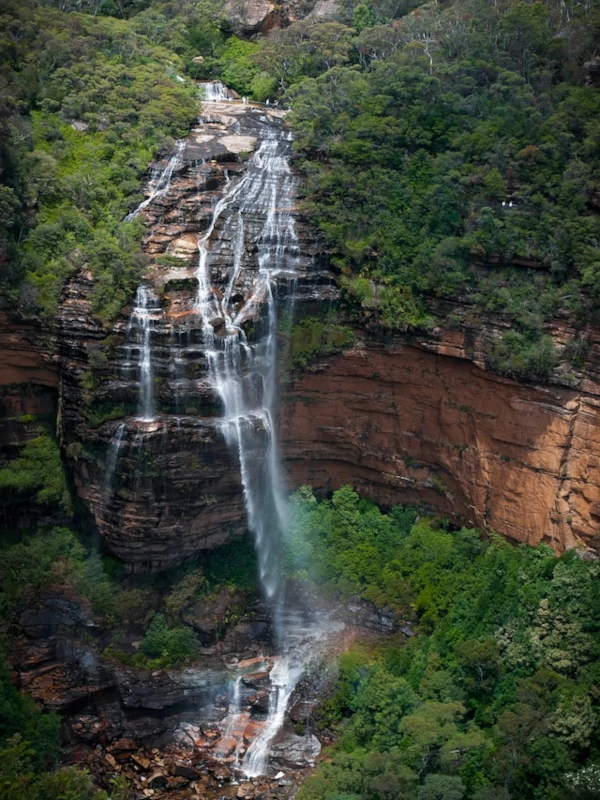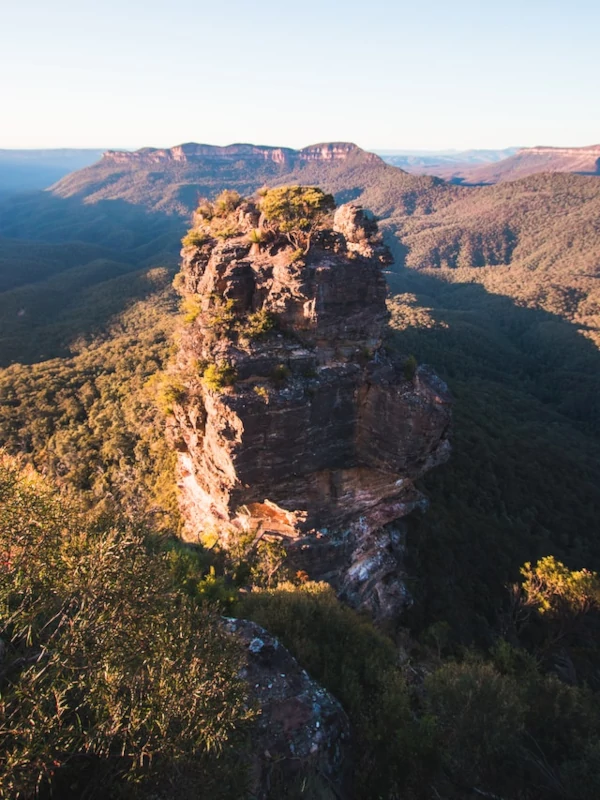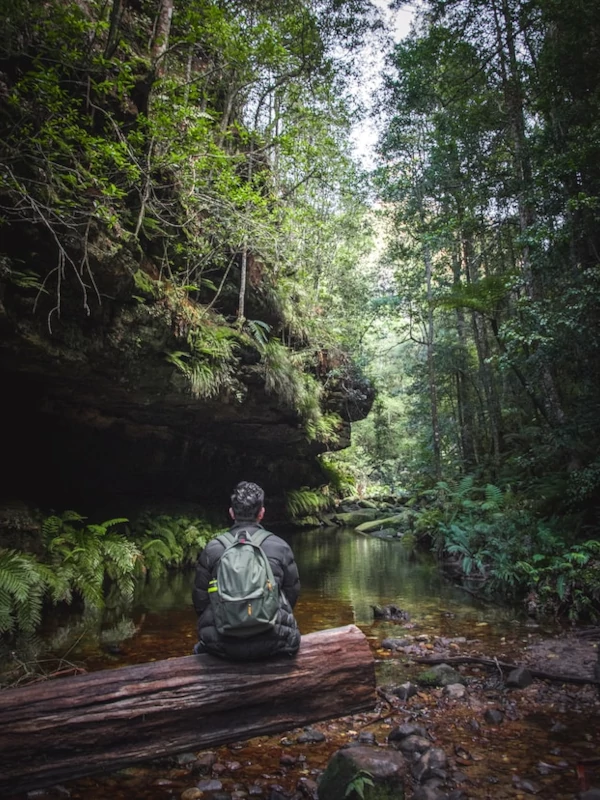Located 80 km west of Sydney, the park which is part of the larger Greater Blue Mountains Area, listed as UNESCO World Heritage, is made of a large plateau that has been carved by rivers that cross the region. These rivers create astonishing waterfalls making their way to the valleys, like the Wentworth Falls or the Empress Falls.
One of the most iconic attractions within the park is the Three Sisters, a trio of towering sandstone rock formations that stand proudly above the Jamison Valley. These ancient rock pillars are steeped in Indigenous Australian legends and provide a stunning backdrop for hiking and photography. The Blue Mountains earned its name from the blue haze that blankets the area, created by the release of eucalyptus oil into the air from the numerous gum trees. Visitors can explore an extensive network of walking trails, some leading to panoramic viewpoints like Echo Point, where the vista of the Three Sisters and the surrounding valleys is truly awe-inspiring.
Beyond its breathtaking scenery, the Blue Mountains National Park also boasts diverse wildlife, including kangaroos, wallabies, koalas and a variety of bird species. It's a birdwatcher's paradise, with opportunities to spot colorful parrots, kookaburras, and lyrebirds. Visitors can also delve into the area's rich Aboriginal heritage through cultural experiences and art galleries in nearby towns like Katoomba. Whether you're an avid hiker, a nature lover, or someone seeking a tranquil escape from city life, Blue Mountains National Park offers an enchanting experience that showcases the beauty and unique character of the Australian wilderness.








